A large part of the plants that you grow in your garden for cooking, can support various medical conditions.
Here are 6 medical herbs you can easily grow at home and make your own herbalist garden.
Chamomile the Mother of the Gut
Chamomile is one of the most familiar and delicious herbs for drinking as an infusion.
In traditional herbal medicine, chamomile is considered the “good for the gut” plant.
They also call it the “Mother of the Gut”.
Chamomile is a key herb in traditional herbal medicine for the treatment of a wide range of gastrointestinal-related problems.
Such problems include irregularities in bowel movements, abdominal bloating, colic, and gastrointestinal infections.
Chamomile has also a calming effect and traditional herbal medicine is using it for stressful situations, anxiety, restlessness, or sleep problems.
In addition, when used externally, it may soothe eye infections, skin irritations, burns, and wounds.
How to Grow Chamomile in Your Herbs Garden

Plant chamomile in a pot or in your herbs garden and grow it mainly in the spring months.
Pick a location that gets at least 8 hours of direct sun a day.
It takes about 6-8 weeks for the chamomile to produce flowers.
.
The chamomile’s dried flowers are suitable for infusion.
You can mulch them, so that the seeds will fall on the ground, and wait for germination.
The chamomile’s seeds usually germinate within 7-10 days.
Uses of Chamomile
You can use chamomile flowers to make an infusion, as you should pick them in the middle of the day.
Concentrated infusions of the dried flowers can be prepared and used externally for eye infections, skin irritations, burns, wounds, etc.
The medicinal plant is gentle and safe to use even on children.
Grow Thyme in a Hot and Sunny Location
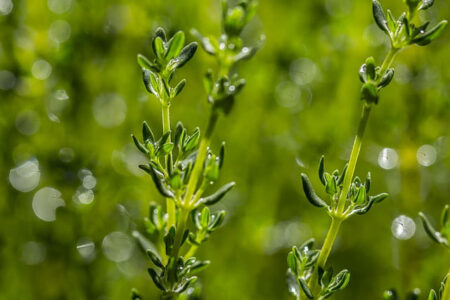
Thyme is a perennial, and evergreen herb, which includes 350 species.
It belongs to the mint family and is also a relative of the oregano genus.
This plant grows relatively quickly and can also be grown in a pot or garden.
Thyme is resistant to cold and dryness, but prefers a hot and sunny location and drained soil.
The small leaves of the thyme have an aromatic scent, and it blooms in the spring with pink flowers that need to be diluted, in favor of strengthening the plant.
Benefits of Thyme for the Respiratory System
Herbal medicine is using thyme to treat breathing problems like flu and sinusitis, due to its expectorant properties.
This herb also contains a natural blood-thinning component therefore it may prevent heart attacks and strokes.
Rosemary Adapts to Many Growing Conditions
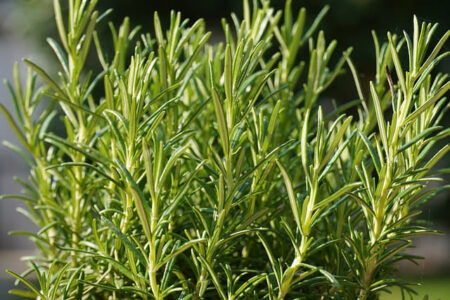
Among the Medicinal herbs, the rosemary plant is extremely durable and relatively simple to grow.
It is an aromatic evergreen shrub, native to the Medditerians and Asia, and is a member of the mint family.
You can use rosemary for cooking potatoes, stews, and many other foods.
How to Grow Rosemary
Rosemary is a perennial plant, and it is best to plant it in early fall or early spring.
It adapts to many growing conditions and is quite a stable and durable plant.
Grow this herb in a sunny location, but if this is not possible, even half a shade will do the job.
You should also space the plants about 50 cm apart from each other.
Rosemary prefers relatively dry soil and therefore should not be over-irrigated.
Important to Know
It is best to grow the rosemary in a pot rather than in the herbs garden’s soil,
as this will allow it to be moved from place to place depending on climatic conditions.
Rosemary’s Medicinal Properties
This herb has many medicinal properties and its essential oil has an antiseptic effect.
According to herbal medicine, you can add this plant to bath water to treat fatigue.
Some believe that it is effective in treating headaches, migraines, and digestive problems related to emotional disorders.
Sage the Savior
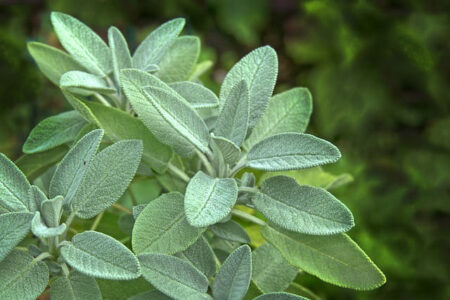
The sage plant is a perennial, evergreen shrub that belongs to the mint family.
It has grayish leaves and purplish flowers.
Sage has a long history of medicinal and culinary use and it has many healing properties.
How to Grow Sage in Your Herbs Garden
It is best to plant the sage in the spring.
The sage plant needs full sun conditions or half shade in airy soil, and you should water it regularly but in a relatively small amount.
Note that the more you expose the sage to the sun, the more you will need to water it.
Health Benefits of Sage
It is an important ingredient in the production of nutritional supplements and serves as an excellent source of fatty acids.
Sage functions as a medicinal plant and is also a major ingredient in many tea infusions.
Recent studies have shown that sage has extremely high antioxidant activity.
In addition, it is possible that phytochemicals in sage have anti-infective properties.
Therefore, sage has the ability to kill a wide variety of bacteria.
Black Elderberry
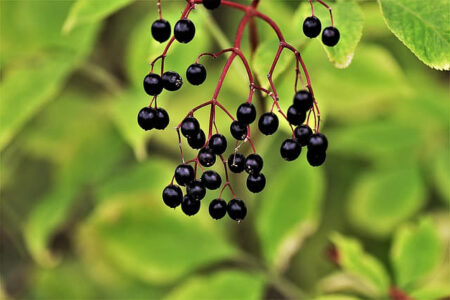
The black elderberry is a shrub from a family of flowering plants, and its origins are in Europe and northwestern Africa.
Its healing properties have been known for centuries.
Indians use black elderberries for digestive problems like constipation, for example.
They also use it to treat shortness of breath and urinary problems.
How to Grow Black Elderberry
To grow the plant it is advisable to purchase a seedling and not seeds, as it takes them a long time to germinate.
This plant prefers cold conditions and a sunny location, along with watering once or twice a week.
You can plant Black elderberry at all seasons as a seedling, and you can grow it indoor or at your herbs garden.
Health Benefits of Black Elderberry
Black elderberry strengthens the immune system, it is anti-inflammatory, and it also helps to relieve coughs.
It encourages sweating and thus helps the body fight attacking bacteria.
Therefore it is suitable for treating flu, sinusitis, chronic inflammation, and hay fever.
You can use the fruits of the elderberry to make an extract for the treatment of colds and flu,
and its flowers are good for curing rhinitis, cough, and lowering fever.
You can also make an infusion from the flowers by simply adding the dried flowers to a glass of boiling water.
Leave it for 15 minutes before drinking.
Aloe Vera
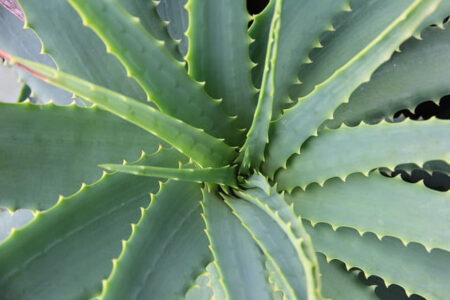
Aloe vera is a succulent plant with a very short stem.
It has been used as a medicinal plant since the days of the Greek physician Dioscorides.
Dioscorides documented, in his famous writings, the use of a gel extracted from the leaves of the aloe vera to treat wounds and skin infections.
How to Grow Aloe Vera in Your Herbs Garden
You can grow Aloe vera in a pot or your herbs garden.
Like other succulents, Aloe vera requires a sunny location and little water.
When using a pot for Aloe vera, make sure it has lots of drainage holes, as this herb cannot bear standing water.
Before watering the plant, make sure its soil is dry.
The best season to plant it is during spring and summer.
Health Benefits of Aloe Vera
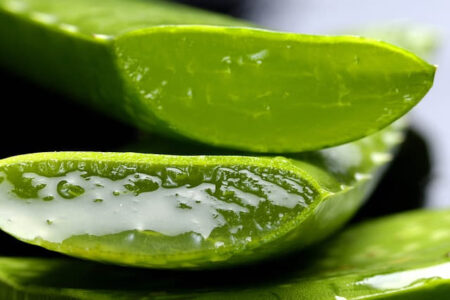
The gel extracted from Aloe vera is used to treat itching, inflammation, burns, and to heal damaged tissues.
In recent years, the medicinal properties of the gel have been studied.
Many of these are mainly attributed to the Acemannan, which is one of the main bioactive polysaccharides of Aloe vera.
Some of its medicinal properties are immunoregulation, anti-cancer, anti-oxidation, and wound healing.
Traditional herbal medicine uses the gel internally for a wide range of problems throughout the digestive system.
Such problems are heartburn, nausea, inflammation and ulcers in the stomach and intestines, irregularities in the bowels, and for balancing blood sugar and fat levels.
Today, science is also showing interest in aloe vera gel and there are various studies that support its traditional uses.
Not many people know that aloe vera gel is rich in nutrients such as vitamins, minerals, essential fatty acids, amino acids, and also dietary fiber.
Uses of the Aloe Vera Gel
The Aloe vera gel can be applied directly to treat wounds, skin irritations, or burns.
It is excellent as a drink that helps treat over-acidic heartburn, nausea, gastrointestinal ulcers, intestinal infections, and also constipation.
This gel can even be consumed as a dietary supplement.



